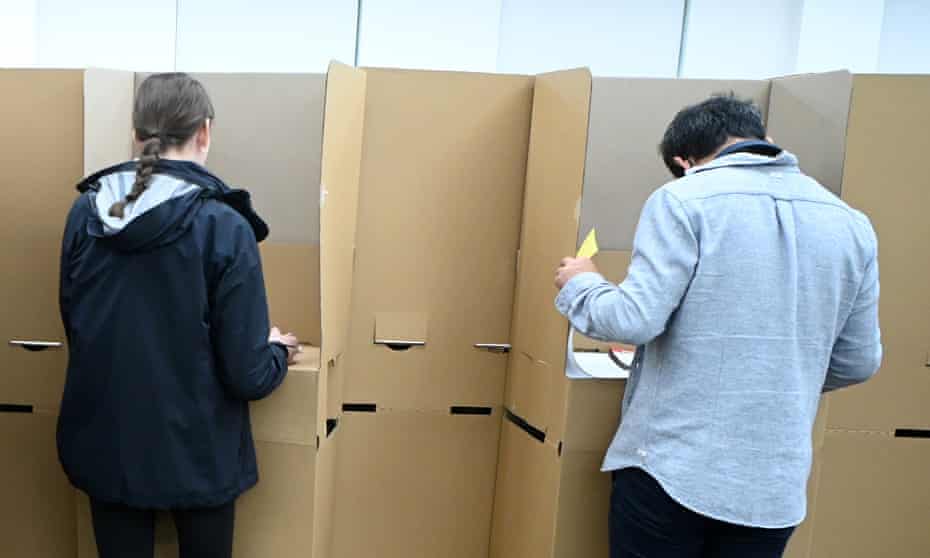Labor was more popular with women, ANU study finds, but difference ‘mostly due to a higher vote for the Greens’

Mon 20 Jun 2022 03.30 AEST
Last modified on Mon 20 Jun 2022 03.31 AESTThose are the findings of a survey of 3,500 voters by the Australian National University and researchers at the Comparative Study of Electoral Systems, released on Monday.
It also found a boost in the number of Australians who said the country is going in the right direction since Anthony Albanese’s victory on 21 May.
Labor has argued it built a broad coalition to win the poll, but post-election analyses have focused on gender due to the extraordinary success of female candidates, particularly independents.
The study found that Labor enjoyed an edge among women, with 35.2% voting Labor and 30% for the Coalition, compared with men, 35.7% of who voted for Labor and 34.2% for the Coalition.
Although Labor did enjoy an advantage among women, the “difference is mostly due to a higher vote for the Greens”, which “flowed back to Labor through preferences”, it concluded.
Coalition voters tended to be older, non-Indigenous, with low education, living outside of capital cities and with household incomes higher than the bottom 20%.
The biggest drivers of people’s votes were education levels and age.
Study co-author Prof Nicholas Biddle said that “more than one in three voters [34.9%] under 55 who voted for the Coalition in 2019 ended up voting for someone else” in 2022.
Young voters were slightly more likely to have voted for Labor and substantially more likely to have voted for the Greens.
“More than one in three people [31.0%] who had completed year 12 and voted for the Coalition in 2019 voted for another party in 2022,” Biddle said.
Biddle said this was in “stark contrast” to former Coalition voters who had not completed year 12, just 14.8% of whom switched their vote.
The Coalition also lost more voters in capital cities, with 30.7% of former Coalition voters living in capitals changing their vote in 2022, compared with 23.0% of former Coalition voters living outside capital cities who voted for another party.
More than one in 10 voters, 13.6 %, made up their mind on election day and a further 19.7% did so in the days before 21 May.
Some 21.9% reported changing their intended vote from April 2022.
The largest aggregate flow between April and May 2022 was from Labor to the Greens, with 4% of all voters switching their vote from the centre-left party to the minor party.
That late surge appears to have helped the Greens pick up three seats, including Labor-held Griffith and Liberal-held Ryan and Brisbane.
There was a “very slight” net flow towards Labor among the two major parties, with 3% of total voters switching from the Coalition to Labor and 2% switching from Labor to the Coalition.
The most commonly cited reasons for switching votes in the last month were “your view on your local candidates changed”, cited by 32.2% of people, followed by “other” and “your view on the prime minister Scott Morrison changed”.
The study also found “a very large increase in satisfaction with the direction of the country, from 62.4% of Australians being satisfied or very satisfied in April 2022 to 73.3% in May 2022”, Biddle said.
“In fact, this is one of the highest levels of satisfaction we have seen since the start of the Covid-19 pandemic and the Black Summer bushfires of 2019-20.”
No comments:
Post a Comment